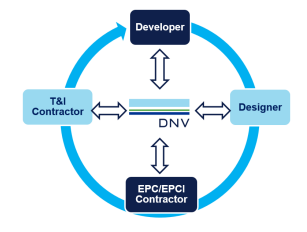Pioneering transportation and installation techniques for floating wind foundations
Joint industry project
This joint industry project (JIP) is set to gather input and insights from industry collaborators in addressing supply chain challenges.
Background and challenge
Offshore wind energy is expanding into deeper waters, necessitating the uptake of floating foundations in the industry. Along with Floating Offshore Wind (FOW) farms’ forecasted growth rate, the number and size of the Floating Offshore Wind Turbine (FOWT) foundations will increase significantly. However, based on feedback, information and studies related to Transportation & Installation (T&I) for FOWT foundations are limited. Coupled with the constraints of vessel capacity and availability, the T&I demand will be challenging to fulfil. As a result, to improve the efficiency of T&I for FOWT foundations has been identified as key bottleneck to tackle in the industry.
Objective
This Joint Industry Project (JIP) is set to gather input and insights from industry collaborators in addressing supply chain challenges. The objective is to enhance the efficiency of Transportation and Installation (T&I) phases for FOWT foundations, ultimately resulting in cost savings for industry partners. A focus will also be put on proposing guidelines that enhance vessel capacity and recommending essential parameters for foundation designs.
Benefit for participant

- Direct influence and involvement in the design requirements for T&I of FOWT foundations
- Obtain insights on the current trend of vessels and FOWT foundations
- Obtain early knowledge on what to expect of future FOWT foundations and vessel design requirements
- Gain insights into the most cost-efficient methods for T&I of FOWT foundations.
Approach
A three-phased study to ensure its relevance to the market and provide value to the stakeholders.

Activities
While the details of the activities are subject to further discussion and finalization, a preliminary task breakdown is provided below.
Phase I
- Perform market analysis to provide insights and forecast on FOW foundation demand, vessel capacity and availability, yard capabilities etc.
- Conduct literature review of FOW farm T&I methodologies, including technologies that are readily available and innovations under development
- Propose potential FOWT foundation T&I strategies and select the most valuable ones for further study in Phase II.
Phase II
This phase dives deep into the operation feasibility and the associated cost at each stage of the foundation T&I process and aims to provide insights that help stakeholders make more informed decisions.
Topics to be covered:
- T&I planning, including vessel & equipment selection, and deck arrangement study
- Loadout and transportation study, including dry transportation, wet tows and modularized transportation
- Foundation installation, including traditional, modular or other novel methods
- Impact from turbine integration methods
- Floating assembly/fabrication concept.
Phase II will also contribute to the updating of DNV’s existing publications.
Phase III (optional)
If it’s of interest, Phase III can be activated to further explore opportunities for a more efficient FOW farm T&I approach through combining the T&I operations of multiple components, e.g. anchor and mooring, foundation, turbine etc.
Deliverables
- Study reports and technical memos as agreed with industry partners
- Improvements to DNV’s existing publications.
Tentative fees
- FOW developer: USD 100k
- T&I/EPC/EPCI contractors: USD 80k
- Designer/Research institute: USD 60k
All fees are payable over 2 financial years. Participants can arrange for flexibility in the payment schedule through mutual agreement.
